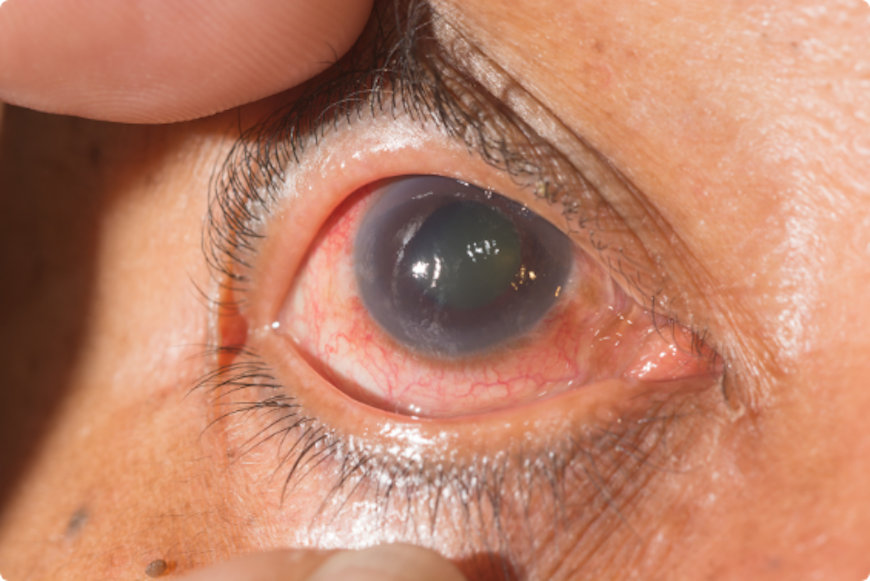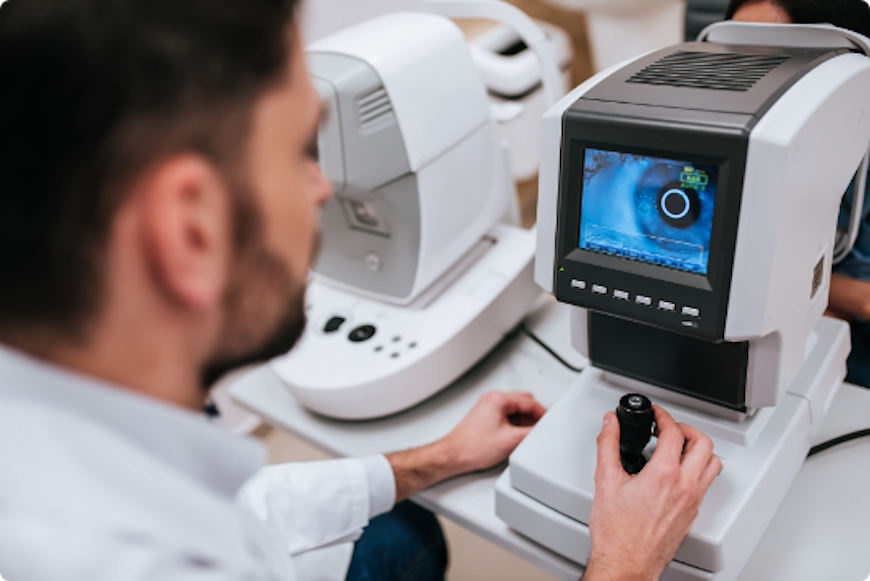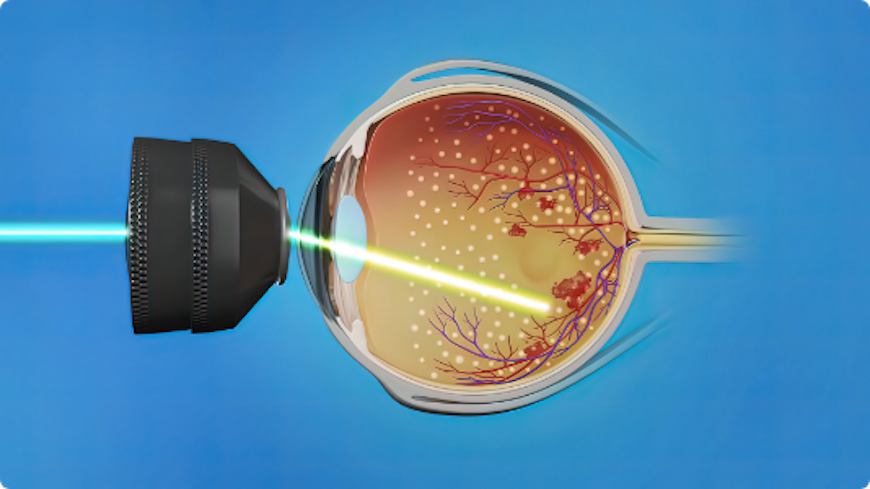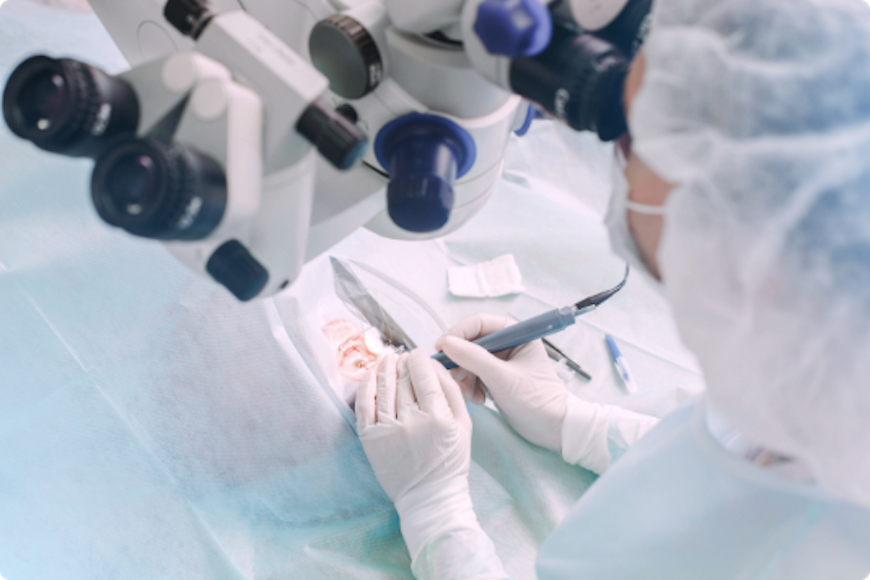Glaucoma Surgery
Glaucoma is a disease that damages your eye’s optic nerve. It usually happens when fluid builds up in the front part of your eye. That extra fluid increases the pressure in your eye, damaging the optic nerve. Glaucoma is a leading cause of blindness for people over 60 years old.

There are several types of glaucoma:
- Open-angle glaucoma
- Normal-tension glaucoma
- Angle-closure glaucoma (also called “closed-angle glaucoma” or “narrow-angle glaucoma”)
- Congenital glaucoma
- Secondary glaucoma
- Glaucoma suspect
People with more risk of developing glaucoma include people who:
- are over age 40
- have family members with glaucoma
- have high eye pressure
- are farsighted or nearsighted
- have had an eye injury
- have corneas that are thin in the center or
- have diabetes, migraines, high blood pressure, poor blood circulation or other health problems affecting the whole body.

Symptoms of glaucoma
In its early stages, open-angle glaucoma has no obvious symptoms. As the disease progresses more blind spots develop in the peripheral (side) view. These points can go undetected until the optic nerve has had serious damage, or until it is detected by an ophthalmologist through a complete eye exam. People at risk for angle closure glaucoma (also called narrow angle glaucoma), usually show no symptoms before an attack. Some early symptoms may include blurred vision, halos, mild headaches or eye pain.
An attack of angle-closure glaucoma includes the following:
- Severe pain in the eye or forehead
- Redness of the eye
- Decreased vision or blurred vision
- Vision rainbows or halos
- Headache
- Nausea
- Vomiting
Glaucoma Diagnosis
The only sure way to diagnose glaucoma is with a complete eye exam. A glaucoma screening that only checks eye pressure is not enough to find glaucoma. Your ophthalmologist will do the following tests and exams during a comprehensive glaucoma evaluation:
- Measure the pressure in your eye (tonometry)
- Inspect your eye’s drainage angle (gonioscopy)
- Inspect your optic nerve (ophthalmoscopy)
- Test your side, or peripheral, vision (visual field test)
- Measure the thickness of your cornea — the clear window at the front of the eye (pachymetry)


Glaucoma Treatment
How your glaucoma is treated will depend on your specific type of glaucoma, the severity of your disease and how well it responds to treatment.
Glaucoma damage is permanent—it cannot be reversed. But medicine and surgery help to stop further damage. To treat glaucoma, your ophthalmologist may use eye drops and when with maximal doses of medications, the disease is not controllable, surgical treatment or laser treatment is needed.
Glaucoma Surgery
In some patients with glaucoma, surgery is recommended. Glaucoma surgery improves the flow of fluid out of the eye, resulting in lower eye pressure.
Laser treatment
Laser trabeculoplasty
A surgery called laser trabeculoplasty is often used to treat open-angle glaucoma. There are two types of trabeculoplasty surgery: argon laser trabeculoplasty (ALT) and selective laser trabeculoplasty (SLT).

Laser iridotomy
Laser iridotomy is recommended for treating people with closed-angle glaucoma and those with very narrow drainage angles. A laser creates a small hole about the size of a pinhead through the iris to improve the flow of aqueous fluid to the drainage angle.

Surgical treatment
If despite the application of maximum antiglaucomatous therapy the disease is not under control, there is a need for surgical treatment. All antiglaucomatous treatments are aimed at achieving a balance between the production and outflow of aqueous fluid.
Recently, drainage shunts such as Ahmed valve, Express shunt, etc. are used.
Glaucoma is a progressive chronic optic neuropathy that, once diagnosed, requires lifetime monitoring and treatment. The adequate treatment requires cooperation between patients and doctors.
Regular ophthalmologist check ups, initially every month and then every 3 months vision, field check up every 6 months, OCT findings each year.
If you use two or more types of eye drops, application between them should be 5 to 10 minutes.
Glaucoma can not be cured, but thanks to the timely detection and appropriate treatment of the disease can be controlled and thereby permanent vision loss can be prevented.

